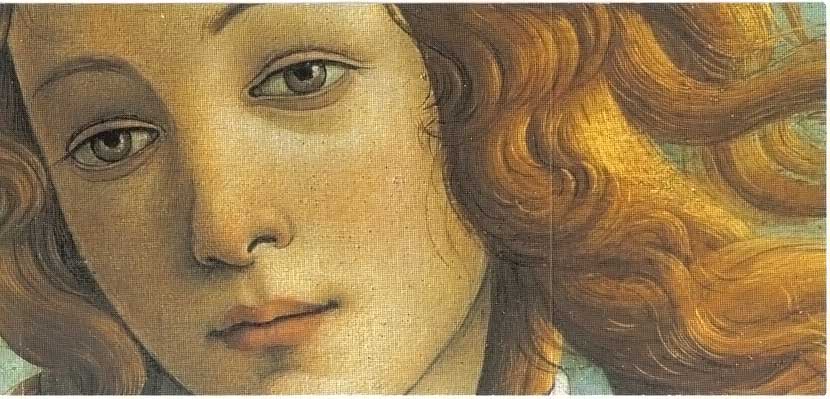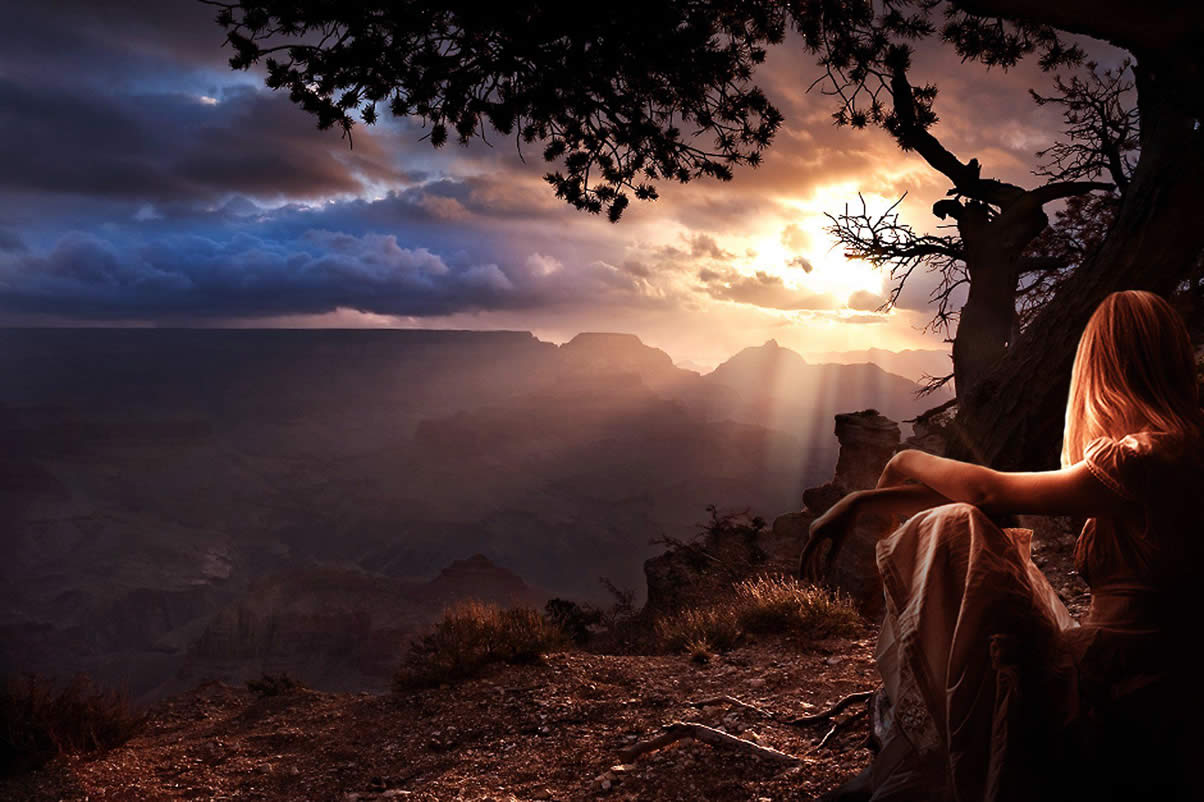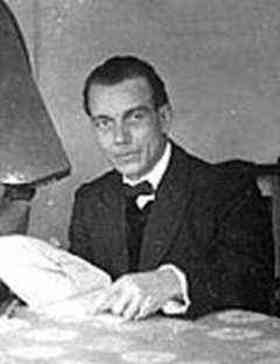
At the beginning of human culture the difference between Nature and "divinity" was imperceptible, philosophical speculation had not come to presuppose a separate creator, as the author of creation. In fact, in the ancient matristic and pantheistic tradition, Nature coincided with the Universal Mother, who from herself and in herself produces all phenomena, manifesting all forms. In this vision there is no separation or difference between the Matrix and its emanations, living or amorphous.
Animals, plants, mountains, waterways, seas, starry skies, moon, human beings ... everything is part of and is an expression of the creative act, an indivisible part of a Unicum. In this perspective, creation is seen as something spontaneous and natural, a cyclical recurrence that arises from the earth, insists on the earth and returns to the earth, in a continuous repetition without a "beyond". Everything is present in the All, in the eternal here and now. This blissful vision did not end with the passing of generations, it lasted a long time, and still remains in the enlightened minds. Its elliptical progression preserves the flavor of eternity.
Yet something has changed over time, the eternal has been virtualized and transferred to a hypothetical afterlife. An afterlife for which passage must be earned, under penalty of extinction or damnation.

"Natura naturans" and "Natura naturata". Both coexist, they are interchangeable according to the situations and moments, even if at times in apparent conflict.
But let's go back to religiosity and eroticism. And we discover that in truth these two projections cannot be separated, just as in the brain the functionality of the right hemisphere cannot be separated from the left, reason from intuition, logical phase from analog phase, synchronicity from cause / effect. Understanding is never "univocal" but requires an "embrace", intelligence is an enveloping and interpenetrating vision. As occurs in the reproductive process between male and female.
Then, in times when history had not yet been confirmed as a linear model of memory, women and men, united in conscious mutual belonging and participation in the vital event, lived religiosity through sexual union.

It is said that in a distant time a community of learned rishis lived in a forest. These Brahmins were adepts in sacrificial rites, through which they had obtained great psychic powers. All day long they offered sacrifices and ablutions to the gods by repeating Vedic mantras while their wives did household chores. The occult powers thus obtained had increased their arrogance and arrogance making them feel superior to nature itself. At that point, Lord Shiva (often identified with our Dionysus), as compensator and holder of natural energy, wanted to teach them. In the company of Vishnu, conservative and refuge of every creature, who took the form of an irresistible woman, Shiva appeared in the forest in adamitic costume and with remarkable sexual attributes in plain sight.

The ancient poets and epic narrators have never felt any embarrassment in combining erotic descriptions with religious teachings. In an inscription affixed to a temple dating back to the 4th century AD It is said that the temple was built "..in the season in which young people, obeying erotic desire, embrace the prosperous, straight and long thighs, breasts and belly, of their lovers and do not care about the cold and frost ..." (Hinduism - Nirad Caudhuri)

Yet something has changed over time, the eternal has been virtualized and transferred to a hypothetical afterlife. An afterlife for which passage must be earned, under penalty of extinction or damnation.
The bliss of belonging to the Whole was clouded when man began to separate himself from the Whole, when the sense of self and mine was born in him. Perhaps it corresponds to the moment when he discovered his "arable" function in reproduction. This fact made him arrogant, fueled the concept of his "authority", in the sense that he began to consider himself the individual "author" of life. And by virtual transposition he imagined a hypothetical creator god, in his image and likeness. Nature, as female, became passive matter, while the creator, both as a god and as a man, was interpreted as a "breath" fertilizer and creator (says the bible). After this separation, the sense of sin appeared in religion, linked to shame for promiscuity and opposition to "matter" as opposed to "spiritual" abstraction, with the result of leading "religious" man to distance himself from things of the world, including sexuality.
But how is it possible to separate life from life? How can a living being survive without food and without heat? He can not…
From this it can be deduced that, despite the stubborn self-affirmation of a spurious entity, defined as "spiritual", the process of separating the ego from Nature can never be completed, only a pious illusion dictated by a religion remains. That first divides and then arrogates the right to "re-unite" (religere). The separation between spirit and matter, between Nature and god is a falsehood, an inversion in natural values and is the cause of sadness and an unsatisfied desire for compensation. In short, the maternal tit is renounced to attach itself to the pacifier.

Thousands of years have passed, various civilizations have arisen and collapsed, different theistic religions have stubbornly tried to separate man from Nature, inculcating the idea of "original sin", the need to repent, to resort to a savior, to a messiah, from time to time different, since every messiah that separates man from the Whole cannot last, as a nightmare cannot last. Therefore the religion that neglects the ways of life, or its ability to perpetuate itself, can never have a definitive implementation, it will remain a hybrid sick and suffering intellectualism. And therefore the affirmation of the patriarchal religious model that we know can never be affirmed, since it lives on imaginary promises, on repeated dogmas, on continuous reaffirmations of faith. In a certain sense, this happens not only for theisms but also for science and its laws which do not last long but are continually replaced by new and more perfected "discoveries".
"Natura naturans" and "Natura naturata". Both coexist, they are interchangeable according to the situations and moments, even if at times in apparent conflict.
But let's go back to religiosity and eroticism. And we discover that in truth these two projections cannot be separated, just as in the brain the functionality of the right hemisphere cannot be separated from the left, reason from intuition, logical phase from analog phase, synchronicity from cause / effect. Understanding is never "univocal" but requires an "embrace", intelligence is an enveloping and interpenetrating vision. As occurs in the reproductive process between male and female.
Then, in times when history had not yet been confirmed as a linear model of memory, women and men, united in conscious mutual belonging and participation in the vital event, lived religiosity through sexual union.

However, I can now tell you the whole excursus, passing from one people to another people, civilization after civilization. I don't have the strength, neither the time nor the desire. I cannot speak of sacred prostitution in temples dedicated to the Goddess, of sexual initiations in the communities of ancient Europe, of promiscuous and polyamorous tendencies, of pagan rites of fertility, of the Song of Canticles or of the vulgar verses of Risus Paschalis ....
But, at least to begin with, I can open a crack, a minute glimpse on some aspects of Hinduism, a religion that has preserved many forms of erotic religiosity to this day. There are many episodes, an entire library would not be enough to narrate them all. I will therefore limit myself to describing a few pages, open almost in bulk. I want to start from a mythological story in which anecdotally allows us to glimpse how eroticism and religion have found a meeting point.
It is said that in a distant time a community of learned rishis lived in a forest. These Brahmins were adepts in sacrificial rites, through which they had obtained great psychic powers. All day long they offered sacrifices and ablutions to the gods by repeating Vedic mantras while their wives did household chores. The occult powers thus obtained had increased their arrogance and arrogance making them feel superior to nature itself. At that point, Lord Shiva (often identified with our Dionysus), as compensator and holder of natural energy, wanted to teach them. In the company of Vishnu, conservative and refuge of every creature, who took the form of an irresistible woman, Shiva appeared in the forest in adamitic costume and with remarkable sexual attributes in plain sight.
He with his prowess and charm tempted and upset the brides of the Brahmins who followed him abandoning their family duties. At the same time the Brahmins were distracted by their rites by the concupiscent Mohini (Vishnu), who with his lewd gait had drawn them to him. Thus the rishi community lost its determination to pursue tapasya for power. But at some point, it always ends, some of those priests noticed the "fall in sin" and called their colleagues to order, accusing Shiva of having hatched a plot against them. They therefore decided to take revenge and having stoked a great sacrificial fire they posed around it declaiming mantras and magic formulas, and thus managed to materialize a fierce and powerful tiger that was immediately unleashed against Shiva. But he, not at all disturbed, killed her effortlessly with his trident and made a robe of his skin which he placed around his hips. The enraged Brahmins pumped even more ghee (melted butter) and mantras around the fire from which rose a swarm of poisonous snakes that were launched like arrows against Shiva. But in contact with his holy body the snakes did not scratch him at all, rather benevolently they licked his skin and arranged themselves as ornaments and belts on his neck and on his robe.
The Brahmins, feeling humiliated in their pride, decided to concentrate all their faculties and evoked the demon of their own ego, which arose from the fire in the form of a monstrous black dwarf, endowed with diabolical strength. The unclean being rushed against Shiva with the intent to destroy him but with a simple gesture of the foot he landed him and held him motionless on the ground. At that point the Brahmins understood that they were dealing with a greater power and feeling confused, with the ego bent by Shiva's grace, they threw themselves at his feet and begged him to accept them as his devotees and part of himself. And so, since then, eroticism became an integral part of religion.
In fact, it must be borne in mind that Hinduism does not separate spirit and matter, which are considered indivisible, and asks practitioners that all precepts are taken seriously even when it comes to sexual relations, as described in Tantra. So we see that some celebrations are resolved into real orgies in which songs are sung and dances of great erotic suggestion are performed.
In fact, it must be borne in mind that Hinduism does not separate spirit and matter, which are considered indivisible, and asks practitioners that all precepts are taken seriously even when it comes to sexual relations, as described in Tantra. So we see that some celebrations are resolved into real orgies in which songs are sung and dances of great erotic suggestion are performed.

In the Shivaite cult and in that of the goddess Parvati, his bride, there are numerous religious stories (purana) that narrate their adventures and sexual pleasures, with descriptions to envy the manuals of love (kamasutra). Among other things, in classic iconography Shiva is depicted with an unequivocal image. This is the Linga-Yoni, a structure in stone, or other materials, which depicts an erect phallus fixed on a platform representing the vagina of his bride Parvati. Worshiping this symbol is considered a very normal thing. Young girls also worship Shiva as Linga. He represents the ideal male, ardent but tender and caring lover towards his bride, to whom he also gives religion lessons, dealing au pair.
This view is not peculiar to Shivaism alone, it is known that many erotic elements are contained in Hinduism. Also in the Rig Veda very raw details are described. But it is above all in the tantric cult of the Mother Goddess Kali or Durga that sexual relations between men and women have become an integral part of the ritual. The detailed description of his love affairs also occurs in some puranas dedicated to Krishna.
Among other things, several highly expressive erotic figures appear in numerous temples. These sculptures must be considered exactly for what they are. Indeed, the ancient Hindus did not need to resort to subterfuge. To demonstrate that the worship of divinity is never separated from what are the normal forms of life, in any temple one followed (and in part still follows) a daily routine that very much resembles the routine of a monarch. In the morning ritual bath, food offerings, reception of devotees, and in the evening entertainment with music and dance performed by specialized "ether", called devadasi, which if necessary also satisfied the devotees sexually, as an act translated by the god.
The ancient poets and epic narrators have never felt any embarrassment in combining erotic descriptions with religious teachings. In an inscription affixed to a temple dating back to the 4th century AD It is said that the temple was built "..in the season in which young people, obeying erotic desire, embrace the prosperous, straight and long thighs, breasts and belly, of their lovers and do not care about the cold and frost ..." (Hinduism - Nirad Caudhuri)

Perhaps this propensity to sexuality, as part of the religious ritual, finds its exasperation in an obsessive aspect of the tantrism defined of the left way, the so-called Vamachara, which consists in indulging ritually to the 5 M., that is the Pancha Makara, and precisely: madya (alcohol), mamsa (meat), matsya (fish), mudra (hand gestures) and maithun (coitus). But suffice it to say that Hindus themselves frown upon these combined attitudes, so much so that practitioners, hypocritically, do everything to hide their practices.
Some scholars wonder about the origins of Tantric eroticism in Hinduism. Sometimes we want to trace this trend back to the libertine customs imported by the Greeks who followed Alexander the Great. In various parts between present-day Afghanistan and Pakistan, ancient statues have been found depicting erotic scenes, such as the rat of Daphne, the embraces of Leda with the swan, the nudes of Venus, etc. but this opinion is not very convincing also because Alexander himself was amazed by some habits observed in the wandering yogis he met in India. Then there is the hypothesis of a Taoist influence but this too is difficult to accept considering that the Taoists had four rules for sexual intercourse: maximum contact, minimum emission of semen, changing the woman frequently, relationship with virgins.
These rules had their own logic, in fact if the man had to acquire vitality in sexual intercourse, to the detriment of the woman, having relationships with expert women or with women with whom he had become familiar, led to a letting go that would not was in keeping with the dictates. They said: "By feeling your orgasm close, restrain yourself. Save your seed and extend your life. " But this attitude is certainly not appropriate for Hindus, for whom abandoning oneself to a woman during sexual intercourse represents the maximum of happiness.
And after all the Hindus are Indo-Europeans and refuse to reduce the woman to the role of sexual slave, as often happens both in China and among all the Semitic peoples.
Paolo D'Arpini
Paolo D'Arpini

spiritolaico@gmail.com
Testo italiano:
Ai primordi della cultura umana la differenza fra Natura e “divinità” era impercettibile, la speculazione filosofica non era arrivata a presupporre un creatore separato, in quanto autore della creazione. Infatti nella antica tradizione matristica e panteistica la Natura coincideva con la Madre Universale, la quale da se stessa ed in se stessa produce tutti i fenomeni, manifestando tutte le forme. In questa visione non vi è alcuna separazione o differenza fra la Matrice e le sue emanazioni, viventi o amorfe che siano. Animali, piante, montagne, corsi d’acqua, mari, cielo stellato, luna, esseri umani… tutto compartecipa ed è espressione dell’atto creativo, parte indivisibile di un Unicum. La creazione in questa ottica è vista come qualcosa di spontaneo e naturale, una ricorrenza ciclica che sorge dalla terra, sulla terra insiste ed alla terra ritorna, in un continuo ripetersi senza un “oltre”. Tutto è presente nel Tutto, nell’eterno qui ed ora. Questa beata visione non si è esaurita con il trascorrere delle generazioni, essa è durata a lungo, ed ancora permane nelle menti illuminate. Il suo procedere ellittico conserva il sapore dell’eternità.
Eppure qualcosa nel corso del tempo è cambiato, l’eterno è stato virtualizzato e trasferito in un ipotetico aldilà. Un aldilà per il quale occorre guadagnarsi il passaggio, pena l’estinzione o la dannazione.
La beatitudine dell’appartenere al Tutto si offuscò nel momento in cui l’uomo cominciò a separare se stesso dal Tutto, allorché in lui nacque il senso dell’io e del mio. Forse corrisponde al momento in cui egli scoprì la sua funzione “seminativa” nella riproduzione. Questo fatto lo rese arrogante, alimentò il concetto della sua “autorità”, nel senso che prese a considerarsi egli stesso “autore” individuale della vita. E per trasposizione virtuale immaginò un ipotetico dio creatore, a sua immagine e somiglianza. La Natura, in quanto femmina, divenne materia passiva, mentre il creatore, sia in veste di dio che di uomo, fu interpretato come “alito” fecondatore e creatore (afferma la bibbia). Avvenuta questa separazione ecco che nella religione apparve il senso del peccato, legato alla vergogna per la promiscuità ed alla opposizione verso la “materia” contrapposta all’astrazione “spirituale”, con il risultato di condurre l’uomo “religioso” a distanziarsi dalle cose del mondo, ivi compresa la sessualità.
Ma come è possibile separare la vita dalla vita? Come può sopravvivere un essere vivente senza cibo e senza calore? Non può…
Da ciò se ne deduce che, malgrado la caparbia autoaffermazione di un’entità spuria, definita “spirituale”, il processo di separazione dell’io dalla Natura non potrà mai avere compimento, resta solo una pia illusione dettata da una religione. Che prima divide e poi si arroga il diritto di “ri-unire” (religere) . La separazione fra spirito e materia, fra Natura e dio è una falsità, un’inversione nei valori naturali ed è causa di tristezza e di un insoddisfatto desiderio di compensazione.
Insomma si rinuncia alla tetta materna per attaccarsi al ciucciotto.
Migliaia di anni son trascorsi, varie civiltà sono sorte e crollate, diverse religioni teiste hanno pervicacemente tentato di separare l’uomo dalla Natura, inculcandogli l’idea del “peccato originale”, della necessità di pentirsi, di ricorrere ad un salvatore, ad un messia, di volta in volta diverso, poiché ogni messia che separa l’uomo dal Tutto non può durare, come non può durare un incubo. Perciò la religione che trascura i modi della vita, ovvero la sua capacità di perpetuarsi, non potrà mai avere una definitiva attuazione, resterà un ibrido intellettualismo malato e sofferente. E perciò l’affermazione del modello religioso patriarcale che conosciamo non potrà mai affermarsi, poiché vive di promesse immaginarie, di dogmi reiterati, di continue riaffermazioni di fede. In un certo senso succede così non solo per i teismi ma anche per la scienza e le sue leggi che non durano a lungo ma vengono continuamente sostitute da nuove e più perfezionate “scoperte”.
“Natura naturans” e “Natura naturata”. Entrambe coesistono, sono intercambiabili a seconda delle situazioni e dei momenti, pur -a volte- in apparente conflitto.

Ma torniamo alla religiosità ed all’erotismo. E scopriamo che in verità queste due proiezioni non possono essere disgiunte, come nel cervello non può essere disgiunta la funzionalità dell’emisfero destro dal sinistro, la ragione dall’intuizione, la fase logica da quella analogica, la sincronicità dalla causa/effetto. La comprensione non è mai “univoca” ma richiede un “abbraccio”, l’intelligenza è una visione avvolgente e compenetrante. Come avviene nel processo riproduttivo fra maschio e femmina.
Allora, in tempi in cui la storia non era stata ancora confermata come modello lineare di memoria, la donna e l’uomo, uniti nella consapevole reciproca appartenenza e partecipazione all’evento vitale, vissero la religiosità attraverso l’unione sessuale.
Non posso però narravi ora l’intero excursus, passando da un popolo ad un altro popolo, civiltà dopo civiltà. Non ne ho la forza, né il tempo e nemmeno la voglia. Non posso parlare della sacra prostituzione nei templi dedicati alla Dea, delle iniziazioni sessuali nelle comunità dell’Europa antica, delle tendenze promiscue e poliamorose, dei riti pagani della fertilità, del Cantico dei cantici o delle strofe volgari del Risus Paschalis….
Ma, almeno per cominciare, posso aprire una fessura, uno spiraglio minuto su alcuni aspetti dell’induismo, una religione che ha conservato a tutt’oggi molte forme di religiosità erotica. Gli episodi sono tanti, non basterebbe un’intera biblioteca a narrarli tutti. Mi limiterò quindi a descriverne alcune pagine, aperte quasi alla rinfusa. Voglio partire da un racconto mitologico in cui aneddoticamente si lascia intravvedere in che modo erotismo e religione abbiano trovato un punto d’incontro.
Si narra che in un tempo lontano in una foresta viveva una comunità di dotti rishi. Questi bramani era adepti in riti sacrificali, attraverso i quali avevano ottenuto grandi poteri psichici. Tutto il giorno essi offrivano sacrifici ed abluzioni agli dei ripetendo mantra vedici, mentre le loro mogli si occupavano delle faccende domestiche. I poteri occulti così ottenuti aveva fatto crescere la loro supponenza ed arroganza facendoli sentire superiori alla natura stessa. A quel punto il signore Shiva (spesso individuato con il nostro Dioniso), in qualità di compensatore e detentore dell’energia naturale, volle impartir loro un insegnamento. In compagnia di Vishnu, conservatore e rifugio di ogni creatura, che prese la forma di una irresistibile donna, Shiva apparve nella foresta in costume adamitico e con attributi sessuali notevoli bene in vista. Egli con la sua prestanza e fascino tentò e sconvolse le spose dei bramani che lo seguirono abbandonando i loro doveri familiari. Allo stesso tempo i bramani furono distratti dai loro riti dalla concupiscente Mohini (Vishnu), che con la sua andatura lasciva li aveva attirati a sé. Così la comunità dei rishi perse la sua determinazione nel perseguire “tapasya” a fini di potere. Ma ad un certo punto, sempre così va a finire, alcuni di quei sacerdoti si avvidero della “caduta nel peccato” e richiamarono all’ordine i colleghi, accusando Shiva di aver ordito un complotto ai loro danni. Essi decisero quindi di vendicarsi e avendo attizzato un grande fuoco sacrificale si posero attorno ad esso declamando mantra e formule magiche, e riuscirono così a materializzare una feroce e possente tigre che immediatamente fu scatenata contro Shiva. Ma egli, per nulla turbato, la uccise senza fatica con il suo tridente e della pelle ne fece una veste che pose attorno ai fianchi. I bramani inviperiti pomparono ancora più ghee (burro fuso) e mantra attorno al fuoco dal quale si levò un nugolo di serpenti velenosi che furono lanciati come frecce contro Shiva. Ma al contatto con il suo santo corpo i serpenti non lo scalfirono affatto, anzi benevolmente gli leccarono la pelle e si disposero come ornamenti e come cinture sul suo collo e sulla veste. I bramani sentendosi umiliati nel loro orgoglio decisero di concentrare tutte le loro facoltà ed evocarono il demone del loro stesso ego, che sorse dal fuoco nella forma di un mostruoso nano nero, dotato di forza diabolica. L’immondo essere si avventò contro Shiva con l’intento di distruggerlo ma egli con un semplice gesto del piede lo atterrò e lo tenne immobile per terra. A quel punto i bramani capirono di aver a che fare con un potere più grande e sentendosi confusi, con l’ego piegato dalla grazia di Shiva, si gettarono ai suoi piedi e l’implorarono di accettarli come suoi devoti e parte di sé. E così, da allora, l’erotismo entrò a far parte integrante della religione.
Infatti bisogna tener presente che l’induismo non separa spirito e materia, che sono ritenuti indivisibili, e chiede ai praticanti che tutti i precetti siano presi seriamente anche quando si tratta di rapporti sessuali, come descritti nel Tantra. Così vediamo che alcune celebrazioni si risolvono in orge vere e proprie in cui vengono cantate canzoni ed effettuate danze di grande suggestione erotica.
Nel culto shivaita ed in quello della Dea Parvati, sua sposa, esistono numerosi racconti a sfondo religioso (purana) che narrano le loro avventure e piaceri sessuali, con descrizioni da far invidia ai manuali dell’amore (kamasutra). Tra l’altro nell’iconografia classica Shiva è raffigurato con una immagine inequivocabile. Trattasi del Linga-Yoni, una struttura in pietra, od altri materiali, che raffigura un fallo eretto fissato su una piattaforma che rappresenta la vagina della sua sposa Parvati. L’adorazione di questo simbolo è considerata una cosa normalissima. Anche le giovani ragazze venerano Shiva in quanto Linga. Egli rappresenta il maschio ideale, amante ardente ma tenero e premuroso verso la sua sposa, alla quale impartisce anche lezioni di religione, trattandola alla pari.

Questa visione non è peculiare del solo shivaismo, è noto che nell’induismo sono contenuti molti elementi erotici. Anche nel Rig Veda vengono descritti particolari molto crudi. Ma è soprattutto nel culto tantrico della Dea Madre Kali o Durga che le relazioni sessuali fra uomini e donne son diventate parte integrante del rituale. La descrizione particolareggiata dei suoi rapporti amorosi avviene pure in alcuni purana dedicati a Krishna. Tra l’altra parecchie figure erotiche, altamente espressive, appaiono in numerosi templi. Queste sculture debbono essere considerate esattamente per quello che sono . Gli antichi indù, infatti, non avevano bisogno di ricorrere a sotterfugi. A dimostrare che l’adorazione della divinità non viene mai disgiunta da quelle che sono le forme normali della vita, in un qualsiasi tempio si seguiva (ed in parte ancora si segue) una routine giornaliera che molto somiglia alla routine di un monarca. La mattina bagno rituale, offerte di cibo, ricevimento dei devoti, e la sera intrattenimento con musica e danze eseguite da “etere” specializzate, chiamate devadasi, che all’occorrenza soddisfacevano anche sessualmente i devoti, come atto traslato dal dio.
Gli antichi poeti e narratori epici non hanno mai provato alcun imbarazzo nel combinare le descrizione erotiche con gli insegnamenti religiosi. In una iscrizione apposta in un tempio risalente al IV secolo d.C. Si dice che il tempio era stato costruito “..nella stagione in cui i giovani, ubbidendo al desiderio erotico, abbracciano le prosperose, dritte e lunghe cosce, i seni ed il ventre, delle loro amanti e non si curano del freddo e del gelo..” (L’Induismo – Nirad Caudhuri)
Forse questa propensione alla sessualità, come parte del rituale religioso, trova una sua esasperazione in una aspetto ossessivo del tantrismo definito della via sinistra, il cosiddetto Vamachara, che consiste nell’indulgere ritualisticamente ai 5 M., ovvero i Pancha Makara, e precisamente: madya (alcol), mamsa (carne), matsya (pesce), mudra (gesti con le mani) e maithun (coito). Ma basti sapere che gli stessi indù vedono di mal occhio queste attitudini combinate, tant’è che i praticanti, ipocritamente, fanno di tutto per nascondere le loro pratiche.
Alcuni studiosi si interrogano sulle origini dell’erotismo tantrico nell’induismo. Talvolta si vuole far risalire questa tendenza ai costumi libertini importati dai greci venuti al seguito di Alessandro Magno. In diverse parti tra l’attuale Afganistan e Pakistan sono state rinvenute antiche statue raffiguranti scene erotiche, come il ratto di Dafne, gli amplessi di Leda con il cigno, nudi di Venere, etc. ma questa opinione convince poco anche perché lo stesso Alessandro restò meravigliato da alcune abitudini osservate negli yogi erranti da lui incontrati in India. C’è poi l’ipotesi di una influenza taoista ma anche questa è difficilmente accettabile considerando che i taoisti avevano quattro norme per i rapporti sessuali: massimo contatto, minima emissione di seme, cambiare la donna di frequente, rapporto con vergini. Queste norme avevano una loro logica, infatti se l’uomo doveva acquistare vitalità nel rapporto sessuale, a discapito della donna, l’avere rapporti con donne esperte o con donne con le quali si era creata una familiarità, portava ad un lasciarsi andare che non era consono ai dettami. Essi dicevano: “Avvertendo prossimo l’orgasmo frenatevi. Risparmiate il vostro seme ed allungherete la vostra vita”. Ma questa attitudine non è certa consona agli indù, per i quali abbandonarsi a una donna durante il rapporto sessuale rappresenta il massimo della felicità. E dopo tutto gli indù sono indoeuropei e si rifiutano di ridurre la donna al ruolo di schiava sessuale, come spesso avviene sia in Cina che presso tutti i popoli semitici.
Paolo D'Arpini












